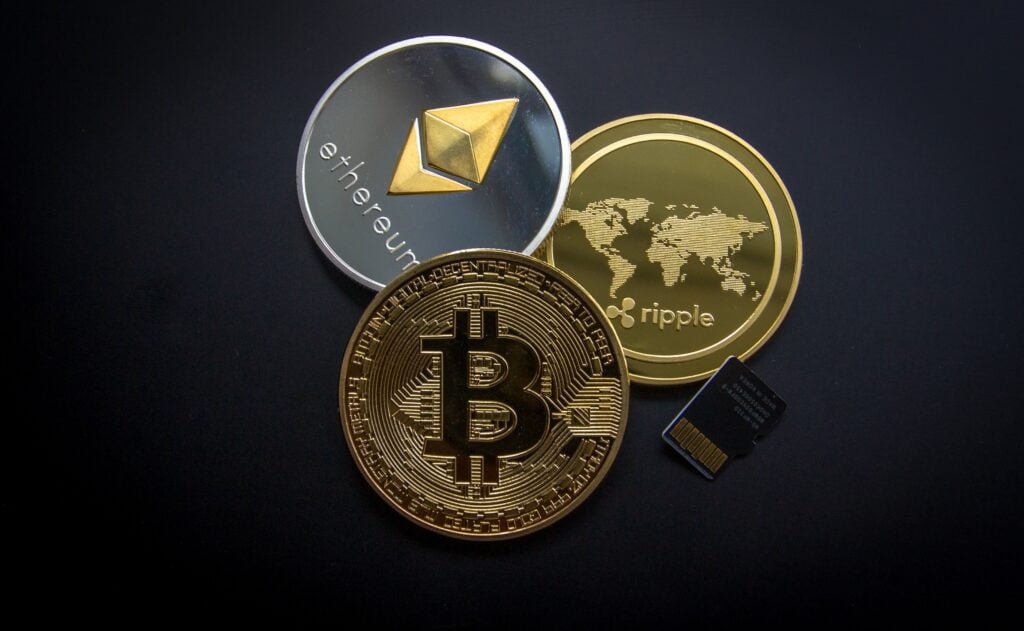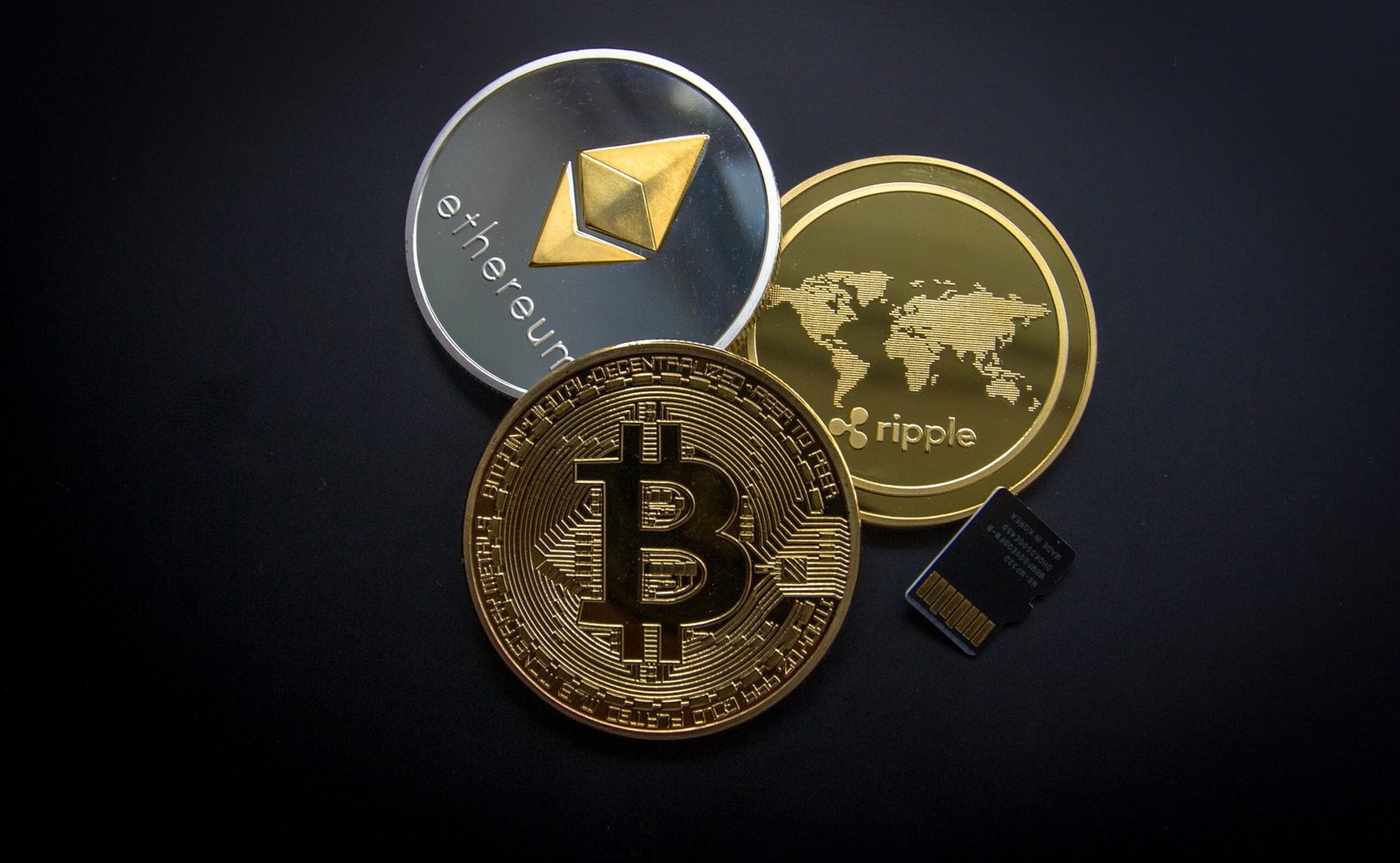Bitcoin (BTC) is a cryptocurrency, or virtual currency, meant to function as money and a form of payment independent of any single person, group, or entity, hence eliminating the need for third-party involvement in financial transactions.

Satoshi Nakamoto, an unidentified developer or group of developers, introduced Bitcoin to the world in 2009. Article Source
It has since become the world’s most well-known cryptocurrency. Its prominence has sparked the creation of numerous new cryptocurrencies. These rivals try to replace it as a payment method or are utilized as utility or security tokens in other blockchains and new financial technologies.
Learn about the cryptocurrency that started it all, including its history, how it works, how to obtain it, and what it can be used for.
Bitcoin Fundamentals
The domain name Bitcoin.org was registered in August 2008. At the moment, this domain is WhoisGuard Protected, which means that the identity of the person who registered it is not public knowledge. Source
In October 2008, a person or group going by the alias Satoshi Nakamoto announced on the Cryptography Mailing List at metzdowd.com, “I’ve been working on a new electronic cash system that’s fully peer-to-peer, with no trusted third party.” This now-famous white paper, titled “Bitcoin: A Peer-to-Peer Electronic Cash System,” published on Bitcoin.org, would become the Magna Carta for how Bitcoin
The first Bitcoin block, Block 0, was mined on January 3, 2009. This is also known as the “genesis block,” and it contains the text: “The Times 03/Jan/2009 Chancellor on edge of second bank rescue,” which could be proof that the block was mined on or after that date, as well as significant political commentary.
Every 210,000 blocks, Bitcoin payouts are half. In 2009, for example, the block reward was 50 new bitcoins. The third halving occurred on May 11, 2020, reducing the reward for each block discovery to 6.25 bitcoins.
One bitcoin can be divided to eight decimal places (100 millionths of a bitcoin), and the smallest unit is known as a satoshi. If necessary, and if the participating miners agree, Bitcoin might be made divisible to even more decimal places.
Bitcoin, as a type of digital cash, is not overly complex to grasp. If you hold bitcoin, for example, you can use your cryptocurrency wallet to send smaller amounts of bitcoin as payment for goods or services. However, when you try to figure out how it works, it becomes extremely complicated.
The Blockchain Technology of Bitcoin
Cryptocurrencies are components of a blockchain and the network that powers it. A blockchain is a distributed ledger, which is a shared database where data is stored. Encryption technologies are used to secure data within the blockchain.
When a transaction occurs on the blockchain, information from the previous block is copied to a new block with the new data, encrypted, and the transaction is validated by network validators known as miners. When a transaction is verified, a new block is formed, and a Bitcoin is created as a reward for the miner(s) who verified the data within the block—they can then use, hold, or sell it.
To encrypt the data recorded in blocks on the blockchain, Bitcoin employs the SHA-256 hashing algorithm. Simply simply, transaction data is encrypted into a 256-bit hexadecimal integer before being stored in a block. This number contains all of the transaction data and information associated with the blocks preceding that one.
Transactions are placed in a queue to be validated by network miners. The Bitcoin blockchain network’s miners all attempt to validate the same transaction at the same time. The mining software and hardware work together to solve the nonce, which is a four-byte value in the block header that miners are attempting to solve.
A miner hashes, or randomly regenerated, the block header until it hits a goal number provided by the blockchain. The block header is “solved,” and a new block is produced for more encrypted and validated transactions.
How to Make Money Mining Bitcoin
Mining Bitcoin can be done using a wide range of computers and software programs. When Bitcoin was first introduced, it was possible to mine it on a personal computer at a competitive level. As Bitcoin gained in popularity, however, more miners joined the network, which made it less likely that a single miner would solve the hash. If your personal computer has more recent hardware, you can still use it as a miner, but the likelihood of each individual miner successfully solving a hash is extremely low.
This is due to the fact that you are competing against a network of miners who produce around 220 quintillion hashes (220 exa hashes) each second. Application Specific Integrated Circuits, or ASICs, are machines that have been built specifically for the purpose of mining. These machines can generate approximately 255 trillion hashes per second. On the other hand, a computer equipped with the most recent hardware can perform approximately 100 mega hashes per second (100 million).
There are a few different paths you can take in order to successfully become a Bitcoin miner. You can mine Bitcoin using software that is compatible with Bitcoin on the personal computer you already have and join a mining pool at the same time. Mining pools are groups of miners who work together to combine their computational capacity in an effort to compete with huge ASIC mining farms.
You also have the option of purchasing an ASIC miner if you are in a position to do so financially. Older ones are also sold by miners when they improve their systems. You can normally get a new one for anywhere around $20,000, but miners also sell used ones. If you purchase one or more ASICs, you will need to factor in some substantial expenditures, such as those associated with electricity and cooling.
There are many different mining programs available, and many different pools that you may participate in. CGMiner and BFGMiner are two of the most well-known programs available today. When selecting a mining pool, it is crucial to make sure that you find out how rewards are paid out, what fees, if any, may apply, and that you read some reviews of other mining pools.
How Do You Purchase Bitcoin?
If you do not wish to mine bitcoin, you can purchase it through a cryptocurrency exchange. Most people will be unable to purchase a complete BTC due to its high price, but you can purchase chunks of BTC on these exchanges in fiat currency such as US dollars. For example, on Coinbase, you can purchase bitcoin by opening an account and funding it. Your bank account, credit card, or debit card can all be used to fund your account. The video below shows how to acquire bitcoin in further detail.
How can one make use of bitcoin?
Bitcoin was created and initially launched as a peer-to-peer payment method. However, due to its increasing value and competition from other blockchains and cryptocurrencies, its use cases are expanding.
Payment
A cryptocurrency wallet is required to use your Bitcoin. Wallets store the private keys to your bitcoin, which must be entered when completing a transaction. Many merchants, retailers, and stores accept Bitcoin as payment for goods and services.
Brick-and-mortar establishments that accept cryptocurrencies will usually have a sign that says “Bitcoin Accepted Here”; transactions can be conducted with the necessary hardware terminal or wallet address via QR codes and touchscreen apps. An online business can easily take Bitcoin by adding it to its other online payment alternatives, such as credit cards and PayPal.
Speculating and Investing
As Bitcoin gained prominence, investors and speculators were interested in it. Cryptocurrency exchanges that supported bitcoin sales and purchases appeared between 2009 and 2017. Prices began to grow, and demand gradually increased until it reached $1,000 in 2017. Many investors felt Bitcoin prices would continue to rise and began purchasing them to retain. Short-term trades on bitcoin exchanges began, and the market took off.
The price of Bitcoin plummeted in 2022. It rose as high as $47,454 in March 2022, and it is now $15,731 as of November 2022. The dip in Bitcoin is due in part to broader market turbulence caused by inflation, rising interest rates, Covid supply chain concerns, and the crisis in Ukraine. Furthermore, some significant tokens have crashed in the crypto world, as has one of the major exchanges, raising concerns about the stability of digital currencies.
The Risks of Investing in Bitcoin
Speculative investors have been tempted to Bitcoin as its price has risen rapidly in recent years. Bitcoin was worth $7,167.52 on December 31, 2019, and had increased more than 300% to $28,984.98 a year later. It continued to rise in the first half of 2021, reaching a high of $68,990 in November 2021 before falling back to settle around $40,000. As previously stated, the price began to fall in early 2022 and has remained thus for the majority of 2022.
As a result, many people buy Bitcoin for its financial value rather than its utility as a medium of commerce. However, because to the absence of guaranteed value and the fact that it is digital, its purchase and use pose certain inherent hazards. For example, the Securities and Exchange Commission (SEC), the Financial Industry Regulatory Authority (FINRA), and the Consumer Financial Protection Bureau (CFPB) have all issued investor alerts on Bitcoin investing.
Regulatory danger:
The lack of consistent laws surrounding Bitcoin (and other virtual currencies) raises concerns about their longevity, liquidity, and universality.
Risk to security:
The majority of Bitcoin owners and users did not obtain their tokens through mining activities. Rather, people trade Bitcoin and other digital currencies on well-known online markets known as cryptocurrency exchanges. Bitcoin exchanges are fully digital and, like any other virtual system, are vulnerable to hackers, viruses, and operational flaws.
Insurance hazard:
Bitcoin and other cryptocurrencies are not covered by the Securities Investor Protection Corporation (SIPC) or the Federal Deposit Insurance Corporation (FDIC). Some exchanges offer insurance through third-party providers. SFOX, a primary dealer and trading platform, said in 2019 that it would be able to offer FDIC insurance to Bitcoin investors, but only for cash transactions.
Fraud danger:
Even with the security safeguards built into a blockchain, there are still potential for fraud. For example, in July 2013, the SEC filed a lawsuit against the operator of a Bitcoin-related Ponzi scam.
Market risk:
Bitcoin valuations, like any other investment, can vary. Indeed, the currency’s value has experienced huge price changes during its brief life. It is particularly sensitive to any newsworthy developments since it is subject to high-volume buying and selling on exchanges. According to the CFPB, the price of Bitcoin fell by 61% in a single day in 2013, with the 2014 one-day price decrease reaching 80%.
Bitcoin Regulation
Regulating Bitcoin has been tough, as it is with any new technology. The current Biden administration tries to place rules on Bitcoin while also attempting not to stifle a burgeoning and economically useful business.
Biden has declared that he will work to prevent the criminal usage of Bitcoin while also encouraging its development. The United States has focused notably on regulating cryptocurrencies and its unlawful use overseas, such as punishing cryptocurrency exchanges and individual bitcoin wallets and recovering cryptocurrency payments made to criminals. There have also been demands for the United States to create a central bank digital currency (CBDC) to better direct these penalties.
As the Bitcoin and cryptocurrency worlds develop, so will the regulation, which will see numerous modifications and legislation implemented over time.
How Much Time Does It Take to Mine One Bitcoin?
The mining network validates a block and generates the reward in about 10 minutes on average. The Bitcoin reward every block is 6.25 BTC. This works out to around 100 seconds to mine 1 BTC.
Is Bitcoin a Reliable Investment?
Bitcoin has a brief investing history marked by extremely fluctuating pricing. It depends on your financial profile, investment portfolio, risk tolerance, and investment goals if it is a good investment. Before investing in cryptocurrencies, you should always get the counsel of a financial professional to check that it is appropriate for your circumstances.
How does Bitcoin generate income?
The Bitcoin network of miners earns money by validating blocks and being compensated for their efforts. Bitcoins can be exchanged for fiat currency through cryptocurrency exchanges and used to make purchases from merchants and retailers who accept them. Buying and selling bitcoins can be profitable for investors and speculators.
What is the value of one bitcoin in US dollars?
As of November 22, 2022, one Bitcoin is worth $15,766 US dollars.
How Many Bitcoins Are Still Available?
There are 19,214,106.25 Bitcoins in circulation. As of November 22, 2022, there are 1,785,893.8 Bitcoins left to mine.
Conclusion
Bitcoin was the first cryptocurrency, and it is designed to be used as a means of payment other than legal cash. Since its inception in 2009, Bitcoin’s popularity has grown and its applications have increased, resulting in the birth of numerous other competitor cryptocurrencies.
Though the process of creating Bitcoin is difficult, investing in it is simpler. Crypto exchanges allow investors and speculators to buy and sell Bitcoin. Investors should carefully assess if Bitcoin is the correct investment for them, as with any investment, especially one as new and unpredictable as Bitcoin.
Disclaimer: Investing in cryptocurrencies and other Initial Coin Offerings (“ICOs”) is extremely dangerous and speculative, and this article is not a recommendation by shonali18.com or the author to do so. Because every person’s circumstance is different, a knowledgeable specialist should always be consulted before making any financial decisions. shonali18.com makes no representations or warranties about the accuracy or timeliness of the material provided on this website.

